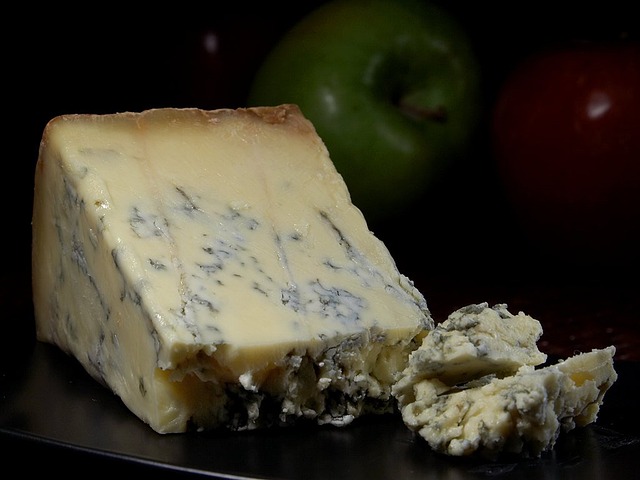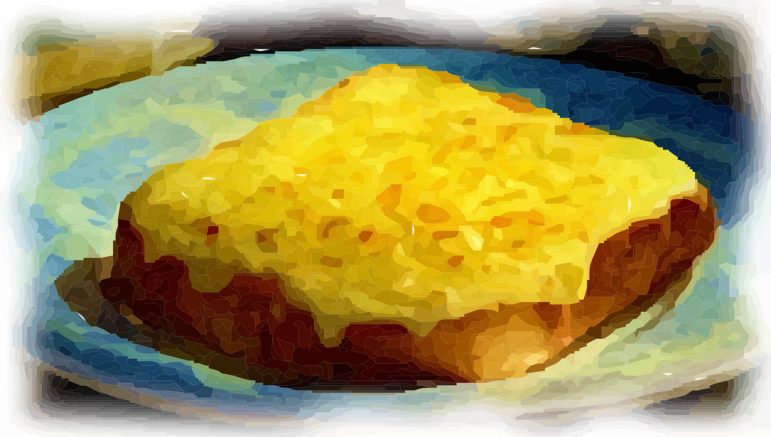Behold, the power of cheese! An investigation into tyromancy and Welsh Rarebit (original) (raw)
Arts & Culture

“It’s not entirely clear why cheese is seen to have magical properties.” – Snopes
I first learned about tyromancy when I was a regular contributor for Jennifer Billock’s newsletter, Kitchen Witch. With a longstanding interest in the intersection between magic, folk belief, and food, I was already familiar with some of the many ways food and drink could be used to tell the future, from reading coffee grounds to pulling hidden charms from a bowl of f_uarag_ on Samhain.
Food is a natural vehicle for divinatory folk magic, not just because, being stuff of life, it’s imbued with power that’s intimately tied to the future of whoever eats it, but because it allows the diviner make use of what they already have, and can often be done in and around the day’s labour. It costs no extra to upturn your cup and read the tea leaves once you’ve finished drinking, and if you’re roasting hazelnuts you’re going to have to keep an eye on them anyway, so why not try and read the future into the way they jump around? But even so, there was something about telling the future using cheese that sounded like a joke. To my delight, and hopefully yours, I discovered that it isn’t.

Blue cheese mold [PDPhotos, Pixabay]
It turns out that tyromancy, the art of fortune telling through cheese products, goes all the way back to the ancient world. Our first mention of the process, along with it’s name (τυρí, meaning cheese, and μαντεία, divination or prophecy), comes from the second century CE in Greece, where Artemidorus of Daldis decried it as the purview of false diviners – alongside those who used dice, sieves, or necromancy to tell the future. Given Artemidors had a vested interest in one specific form of divination being viewed as legitimate – dream interpretation, to which he himself was compiling a guide, the Oneirocritica – and apparently granted very few others (mostly those used by the state and which therefore couldn’t be argued with) similar status, I think we can take his opinion with a pinch of salt, or several.
Though Artemidorus didn’t feel the need to go into details about how one actually performs tyromancy, we do have later medieval and early modern sources to fall back on, as that appears to have been when tyromancy reached its peak of popularity. The early modern period was an increasingly turbulent time, filled with war, religious conflict, and the terrifying weather events of the little ice age, all factors that drove an increased interest in magic and divination. According to Jennifer, who practises and teaches tyromancy as a side hustle, this was exacerbated by the theology of predestination taking hold, along with the increasing power of the church, in parts of Europe and the American colonies; people were desperate for some control over, or at least insight into, their predetermined future.
Tyromancy, making use of a ubiquitous, easily available foodstuff in those dairy heavy, agrarian areas, was a popular choice. This was perhaps because, unlike other popular methods like dropping hot lead into cold water, it was significantly cheaper and you could eat the evidence, leaving nothing for the increasingly active (and paranoid) witch hunters to find.
There’s no one correct technique for practising tyromancy, as traditional methods seem to have varied not just by region but potentially from practitioner to practitioner. Jennifer’s research into the subject when building her practice involved tracking down antique spell books and other instruction manuals of the occult and piecing together the different methods to create an organic modern practice. Historical techniques involved examining the shapes made by the milk as it curdled, the pattern and distribution of holes or mould on the surface, and the patterns formed by crumbling or breaking the cheese into pieces and examining the edges.
My favourite historical approach to tyromancy involves writing names or possibilities on different pieces of cheese and then waiting to see which ones developed mould, or were eaten by animals, first. Apparently this was a popular means in some places for medieval girls to try and divine their future husbands, one of the most common uses for food based divination even now (just think about the soda can ring pull game where you twist the tab back and forth while working your way through the alphabet until it comes off, with the final letter supposed to be the beginning of your future spouse’s name).
Tragically the mould/animal method is a bit too time consuming (not to mention unsanitary) for modern times, especially if you’re trying to teach a class or answer a client’s questions in a single session. When Jennifer is running her workshops or practising tyromancy for a client she asks them to provide her with a type of cheese that has significant surface variation (such as Swiss or bleu cheese), preferring to read their fortune in the shapes of the holes or the patterns in the mould. However, if those kinds of cheese aren’t an option for some reason, then it’s no problem, because she’ll break the cheese they do bring into pieces and read meaning into the rough new edges, or crumble it up and interpret the shapes and patterns that result. In a truly modern twist on this ancient tradition, she’ll even use vegan cheese at client’s request, because she says it works just as well as the regular dairy based original.
There are no hard and fast rules when it comes to reading cheese. Consider a mixture of looking for shapes as with tea leaves or coffee grounds (mayb if you can’t find a guide to tyromancy you could start there) and letting instinct guide you as to what they mean, similarly to how some tarot readers work, with the answers popping into your head as you see and feel the cheese/cards. If working with melting cheese, then apply methods akin to the hot lead or wax in water techniques, watching the shapes that form as the cheese melts in a pan or sets on top of the pasta/toast and taking your answer from those.
Whatever kind of cheese you prefer, however you choose to prepare it, there’s a way to work tyromancy into your meal – and, if you’ve come this far looking for the recipe I’ve prepared to help you out, check out this Welsh Rarebit recipe below. There’s two chances for cheese based divination here, watching the shapes that form as the cheese melts into the sauce and interpreting the patterns on the surface of the final dish. If you do give it a try I’m very curious to hear about your results so do let us know!
Welsh Rarebit (serves 4)

Cheese toast painting [Pixabay]
Ingredients
- 4 oz butter (preferably unsalted)
- 10 oz of medium to mature cheddar or 5 oz cheddar and 5 oz other medium hard cheese
- 1 teaspoon wholegrain mustard
- ¼ cup of beer (preferably dark)
- Worcestershire Sauce
- Black pepper
- Salt
- 8 slices of good bread, toasted
Melt the butter over a low heat and whisk in the cheese until you’ve got a smooth emulsion, then add the beer, the mustard and the Worcestershire Sauce to taste. Once you’ve got it down to a nice thick texture taste it and add salt if necessary as well as black pepper, then pour it over the toast. If you want you can put the mixture in the fridge for later, at which point it should have become nice and spreadable. Spread a thick layer on the toast and put it under the broiler to heat up and get nicely crispy.
The Wild Hunt is not responsible for links to external content.
To join a conversation on this post:
Visit our The Wild Hunt subreddit! Point your favorite browser to https://www.reddit.com/r/The_Wild_Hunt_News/, then click “JOIN”. Make sure to click the bell, too, to be notified of new articles posted to our subreddit.